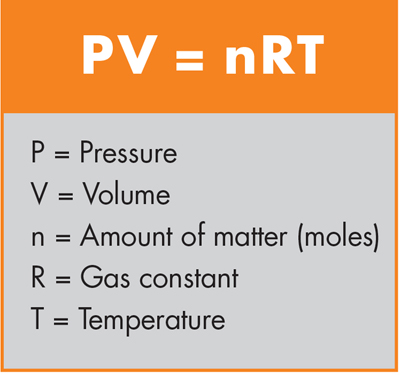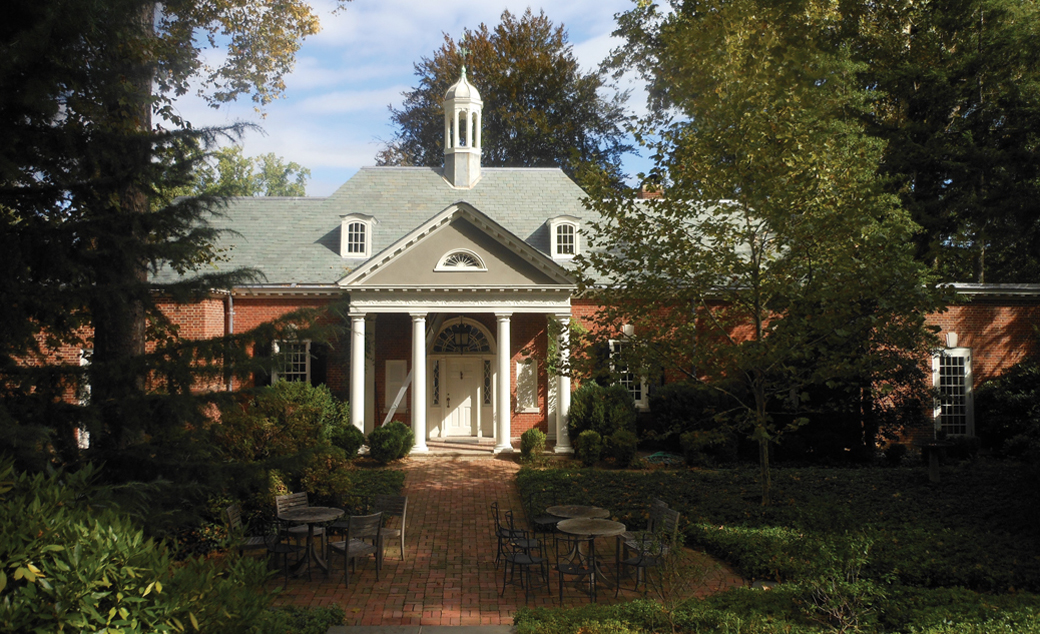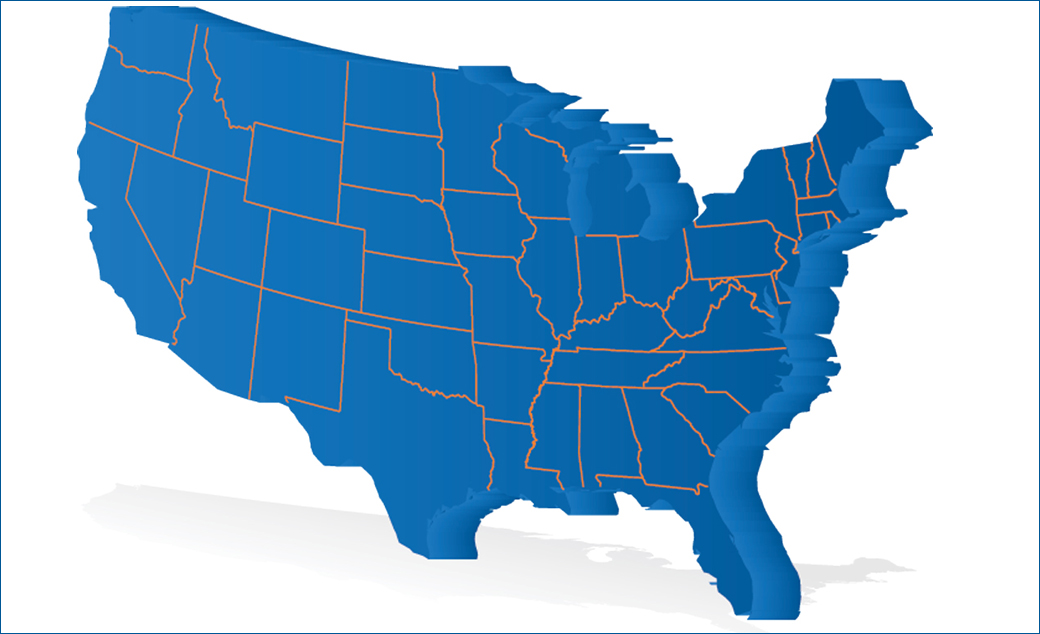For quite some time, the roofing industry has been using highly reflective low-slope roof membranes—commonly referred to as "cool roofs." From their early uses in the 1990s, these cool roofs have been said to cause moisture accumulation in low-slope roof systems throughout the U.S. in hot and cold climates. These statements have come from all contingents in the roofing industry and slowly turned into an urban legend.
This urban legend says an owner or designer should avoid a cool roof because it will accumulate more moisture underneath it when compared with nonreflective membranes. Once the thought of moisture accumulation under a roof membrane is in place, the fears such as facer failure, loss of R-value and biological growth follow.
This type of information currently is being used in marketing materials for noncool roof membranes and presented in sales presentations as fact with little to no science or facts to substantiate the claim. However, when physics are used to evaluate moisture accumulation in highly reflective roofs, this roofing industry urban legend can be disproved.
Temperature differential
The best starting point is to look at what a highly reflective low-slope roof membrane does. As the name implies, it is highly reflective, specifically to incoming solar radiation at about 280 to 3,000 nanometers. By reflecting a greater portion of incoming solar energy during daytime hours, a highly reflective roof system will operate at a lower temperature than a darker, relatively nonreflective membrane.
Figure 1 reflects data collected from a test bed research project conducted by the Midwest Roofing Contractors Association in Manhattan, Kan. The two roof systems on the test bed facility were constructed using the same insulation, attachment method and solar exposure and were over common airspace. The only difference between them is the membrane reflectivity—one is a highly reflective membrane (69 percent) and the other is a nonreflective membrane (7 percent). The reflectivity was measured with a reflectometer a few weeks before the data was recorded (not manufacturer-specified).

Figure 1: A 24-hour data set for a highly reflective roof membrane and a nonreflective roof membrane. The two membranes were installed on the same building with the same exposure, R-value and airspace below. The only differing variable was their measured solar reflectivity.
When examining Figure 1, some interesting facts emerge. First, a white (highly reflective) roof membrane operates at a lower temperature than a black roof membrane; hence, the connotation cool roof. Next, during nighttime hours, there is parity between the white and black membranes. Basically, this means when incoming solar radiation is absent dusk to dawn, the two membranes have nearly identical temperatures. Lastly, there is pronounced nighttime radiative cooling, meaning the membranes cool to temperatures below air temperatures.
I would hope a reasonable person, after examining Figure 1, would agree cool roofs operate at lower temperatures than nonreflective roof membranes. All the data sets collected from the instrumented building show a similar temperature differential during daytime hours. In addition, there is a voluminous amount of research in print, such as The Institution of Engineering and Technology's 2007 paper "Estimating the effect of using cool coatings on energy loads and thermal comfort in residential buildings in various climatic conditions," that echoes this data and supports the conclusion.
Moisture movement
If there is concern about how moisture accumulates in a roof system, it seems logical to consider how moisture moves within a roof system. There are four major categories of moisture movement to consider:
- Vapor diffusion
- Capillary movement
- Gravity
- Air movement/mass transport
Vapor diffusion often is feared by contractors and designers. Diffusion occurs when there is a concentration difference (gradient). Specifically, diffusion occurs when there is a difference in water vapor pressure between two points, such as the inside and outside of a building or even two points within a material.
Consider Florida's hot, humid climate and an air-conditioned building. The water vapor pressure outside the building is higher than it is inside. Therefore, water vapor in the air, creating the vapor pressure, will have a propensity to move from high-vapor pressure outside to lower pressure inside.
The exact opposite effect happens during winter in Wisconsin where there are warm, humidified interior climates and cold, dry outside climates. In such a climate, water vapor in the air wants to move from inside to outside because the water molecules are driven by water vapor partial pressures that create a gradient.
In fact, if the pressure differentials and the resistance between them (permeance) are measured, the mass of water that moves in grains can be calculated (h• ft2•in. Hg).
This same situation occurs within a roof system. The water molecules want to move from a high vapor pressure area to a low-pressure area. As such, water molecules will diffuse from wet insulation toward dry insulation. The speed in which this occurs is strongly dictated by a material's permeability. As an example, a Type II, Class 1 polyisocyanurate insulation manufacturer lists its product at 1.5 perms, and a stone wool insulation manufacturer lists its product at 42 perms—an increase of 28 times the moisture movement inside or outside for the same insulation thickness.
Capillary movement of moisture in roof systems occurs with liquid water. This phenomenon is driven by the same forces that cause surface tension. We have all seen this effect when we use a paper towel to wipe up a liquid spill. The water does not magically jump into the paper towel. Capillary movement transports the liquid into the paper towel. A more absorbent paper towel is just one that creates a greater capillary action.
This capillary effect can occur in roof systems, as well. Water can be advanced along a tight board joint in a lap joint or even within sheet-metal joints. But the capillary effect also occurs within microscopic pores within a material. Consider a board of high-density fiberglass. There are tiny capillaries between the individual glass fibers. The capillary movement of liquid water will occur in these tiny spaces within the material. This effect is measurable and, therefore, the movement of capillary water within a material can be calculated similar to water vapor movement.
The photo on page 30 shows a view from a field investigation over a pool. The moisture intrusion shown was determined to be sourced from air leakage from a hot, humid pool at the roof-wall interface. Note how the capillary action has drawn the moisture along the board joints.
Gravity-driven moisture movement is another common phenomenon. Water runs downhill and is affected by hydrostatic pressure developed by gravity. Therefore, if we have a breach in a roof membrane and precipitation enters a roof system, gravity will draw the liquid down into the system and eventually into the building.
The fourth form of moisture movement in a roof system to address is mass transport by moving air. This air movement can be natural or artificial. Natural sources of air movement include wind-driven pressure differences, buoyancy from temperature differences in the air and the billowing action of a mechanically fastened roof membrane oscillating in the wind. Artificial air movement in a roof almost always is sourced from a building's HVAC system.
If there is air movement within a roof system or in and out of a roof system, there is the potential for mass transport. Essentially, air can take on water vapor (mass) and carry it in or out of a roof system. Natural and artificial sources of air movement are capable of having detrimental effects to moisture levels within a roof system—the source that creates the most detrimental effect depends on numerous variables unique to the roof system on which a building is installed.
Of these four moisture movement methods, air movement is the most commonly underestimated source of moisture problems. However, any of the four methods of moisture movement is capable of moving significant amounts of moisture in or out of a roof system.
Diffusion's driving force
There is a well-established principle in chemistry and physics called Boyle's Ideal Gas Law. Figure 2 shows Boyle's Ideal Gas Law, and the variables identified. This formula is important because moisture-laden air strongly obeys Boyle's Ideal Gas Law.

Figure 2: Boyle's Ideal Gas Law
Consider this: When there is a blister in a low-slope roof membrane, there is a pocket of moisture-laden air (typically) trapped in a roof system. In the morning, the membrane is cool and any blisters can be relatively small or even undetectable. However, later in the day when the sun has had a chance to impart a temperature swing, such as the one shown in Figure 1, the temperature of the gas inside the blister will rise.
Boyle's Ideal Gas Law states both sides of an equation must be equal. The mass of gas present in a blister (n) generally should not change, and the gas constant (R) will not change. This means if the temperature (T) rises on the right of the equation, the pressure (P) or volume (V), or both, must rise to balance the equation. In the blister example, the gas pressure in the blister will rise with rising temperatures, expanding the blister until the volume increases to equilibrium. Therefore, blisters increase with higher midday temperatures and decrease at nighttime per the temperature profile shown in Figure 1.
The same forces driving a blister to grow and contract effectively drive moisture diffusion. Subsequently, Boyle's Ideal Gas Law ultimately dictates moisture diffusion in and out of a roof system. If a moisture-laden insulation system, regardless of how it came to be laden with moisture, has an increase in temperature, the response according to Boyle's Ideal Gas Law is the pressure and/or volume must rise to equalize the equation.
However, in a roof system, the volume is not constrained like the blister. Therefore, the moisture-laden air will increase in pressure and freely expand into a building's ambient pressure. The net effect is water vapor diffusion. As previously discussed, this is movement of water vapor from an area of high vapor pressure to an area of low vapor pressure.
The point to recognize is water vapor diffusion in a roof system is driven by temperature difference, but this can work both ways. I used the example that increasing temperatures can lead to increasing pressures and exodus from a roof system. If the temperature drops during winter or nighttime, the opposite occurs and vapor pressure drops inside a roof system, potentially causing a net influx of moisture into the roof system.
Self-drying roof systems
A self-drying roof system is a concept recognized in the 1980s. The idea is a roof system will gain moisture during colder winter months, but this same roof will release the moisture during summer months and the net annual effect is no net moisture change year to year. This concept falls in line with the reasoning previously discussed regarding moisture movement in Boyle's Ideal Gas Law—moisture goes into a roof system during winter and flows out during summer.
The self-drying concept was investigated and discussed by the roofing industry into the 1990s. It generally is regarded as the reason many roof systems are designed without vapor retarders though a hand calculation for steady-state temperatures indicates a roof system would need one. The roofing industry accepts there will be some moisture gain in a roof system during cold winter months and the summer heat will drive away this moisture.
Putting it together
Reviewing the data from Figure 1, it is clear highly reflective roof membranes operate at lower temperatures than nonreflective roof membranes.
Now, consider the four forms of moisture movement in a roof system previously discussed. Does air movement within a roof system depend on a roof membrane's temperature? Generally, no.
Is movement of liquid water by gravity affected by a roof membrane's temperature? No. A leak in a roof membrane, or however the water arrives in a roof system, is not affected by roof membrane operating temperatures.
So is capillary water movement within a roof system affected by differing membrane temperatures? Again, no, it is not.
What about diffusion of water vapor? Will it be affected by membrane temperature? The answer is a definite yes. As identified when discussing Boyle's Ideal Gas Law, diffusion and, more specifically, the rate of diffusion, depends on temperature. Higher membrane temperatures will lead to increased diffusion rates, and lower temperatures will produce lower diffusion rates. This means a hot roof will diffuse moisture faster than a cooler one. Or more simply, a hot roof will dry down faster than a cooler one.
What about a self-drying roof system? Consider the roofing market of the 1980s and 1990s. Nonreflective roof membranes such as black EPDM and built-up roofing dominated the market. When compared with a contemporary cool roof, these roof systems performed at higher temperatures. So higher temperatures mean a higher diffusion rate and faster drying out from winter moisture accumulation.
Returning to Figure 1, if you consider moisture can move freely in and out of these two roof systems, there is no vapor retarder in the interior. The maximum influx of moisture into these roof systems by diffusion would be when their temperatures are at their lowest, typically at nighttime. Additionally, it is during these nighttime hours that these roof systems are in temperature parity; their temperatures are almost identical.
However, when dawn comes and the solar radiation begins to affect different membranes differently, their operating temperatures diverge. A nonreflective roof system will operate at a higher temperature and will be able to diffuse moisture and dry faster than a highly reflective cool roof. Taking this to the next step, if a highly reflective cool roof does not diffuse all the moisture from the previous night, there is moisture accumulation.
Using common sense
My goal for this article was to provide the roofing community with some key points of the building physics required to make a determination about moisture accumulation in highly reflective roof systems. To this end, I discussed the operating-temperature differential created by roof systems with differing reflectivity; I examined the four main forms of moisture movement within a roof system; and I examined Boyle's Ideal Gas Law, discovering the rate of diffusion-based moisture movement is driven by temperature.
With these points in mind, I also considered two roof systems built the same except one has a highly reflective membrane and the other has a nonreflective membrane. One should perform at a higher temperature than the other during the day. If there is little to no moisture that enters the roof system, meaning there is a quantity that both roof systems can readily diffuse out, no moisture accumulation would be expected. Effectively, there should be no moisture issues and both roof membranes should function as intended for their service lives.
But if these two roof membranes have just enough moisture gain occurring that the lower-operating temperature roof system cannot facilitate a complete dry down, there will be moisture accumulation and the situation will be detrimental to roof performance.
However, ask yourself this question: Did the highly reflective membrane cause moisture accumulation? No. The cool roof is merely at a disadvantage when trying to dry down.
Therefore, should anyone in the roofing community disregard a highly reflective roof membrane because of its low-temperature-based ability to diffuse moisture out of a roof system? No. Just as with any roof system, there are common sense principles in design and installation needed to facilitate a successful and long-lasting roof system. Considering temperature-driven moisture movement is just another principle to follow when designing and installing a roof system.
If a roofing professional desires to install and specify a highly reflective membrane to benefit from its lower-operating temperatures, he or she merely needs to remember if moisture arrives under a roof membrane by any mechanism, the lower-temperature roof membrane will be at a disadvantage when facilitating moisture drive-out as a result of lower vapor pressures developed.
Mathew Dupuis, PH.D., PE is senior engineer for Structural Research Inc., Madison, Wis.



